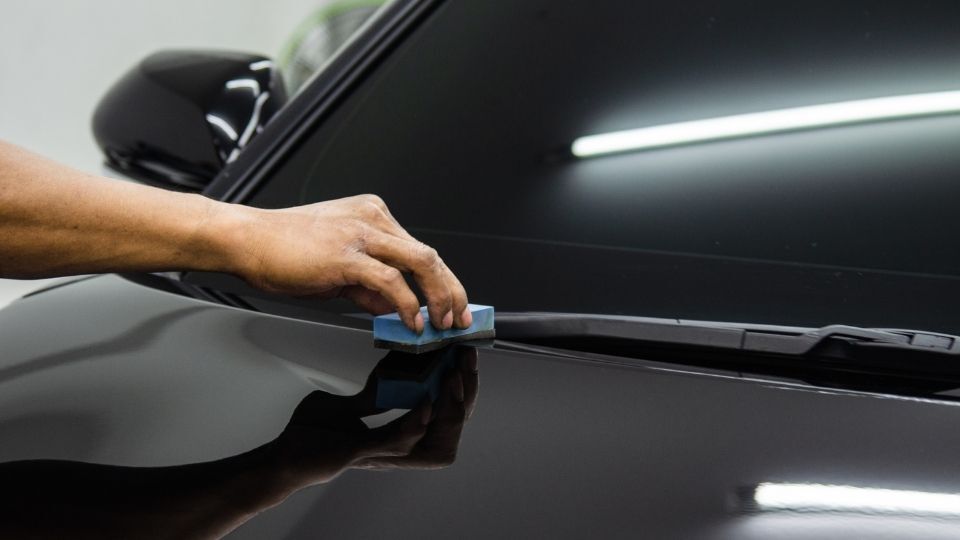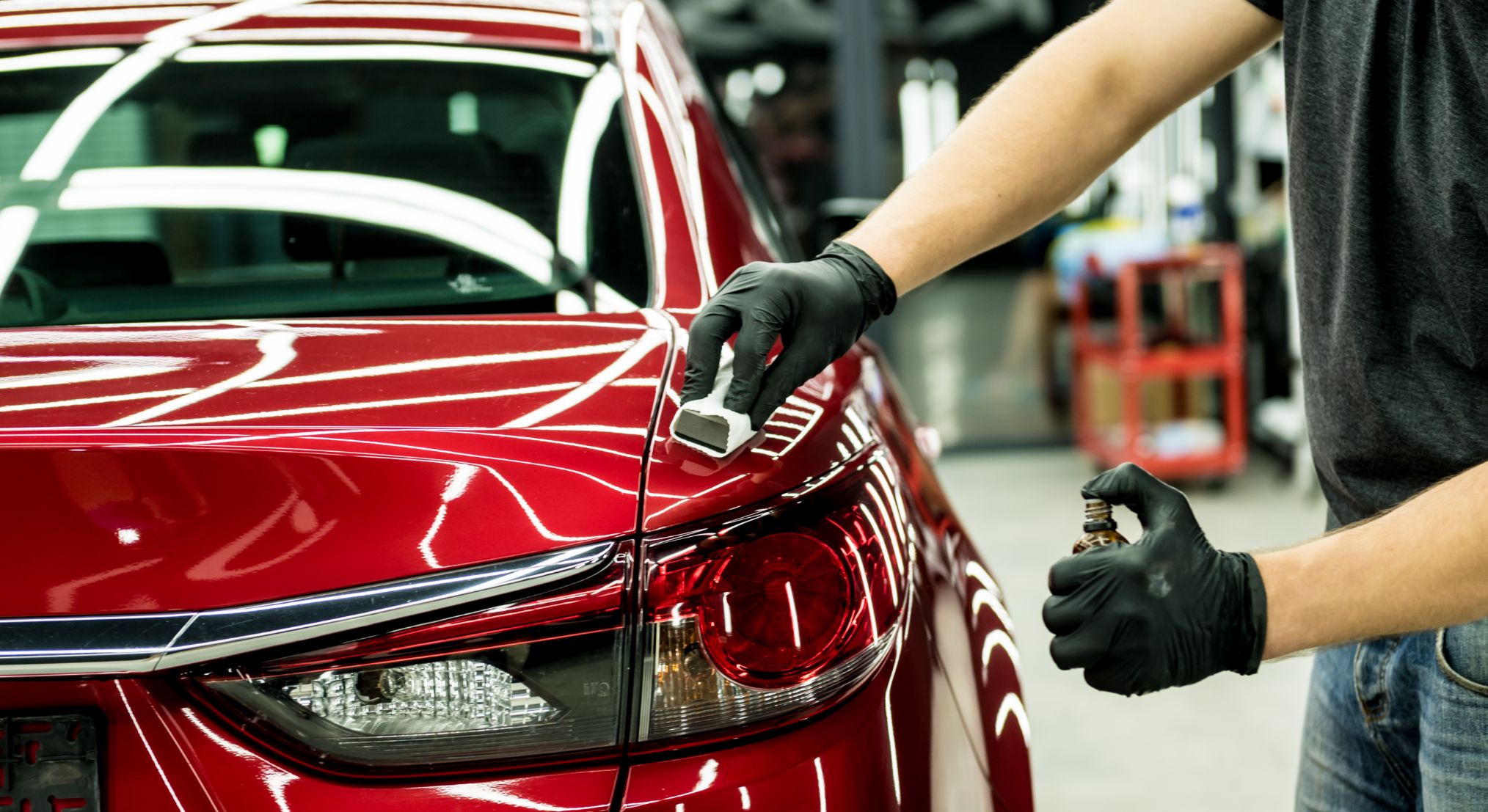Ceramic Coating: The Future of Automotive Surface Protection
Ceramic Coating: The Future of Automotive Surface Protection
Blog Article
Ceramic Layer vs. Typical Wax: Which Provides Much Better Long-Term Protection?
The discussion between ceramic coverings and typical wax for car security has garnered considerable attention amongst vehicle fanatics and professionals alike. While both serve the function of safeguarding paint, their distinctions in sturdiness, application, and lasting maintenance expenses might influence a customer's option. Ceramic finishes flaunt exceptional long life and resistance to ecological elements, yet the intricacy of their application increases questions about access and usefulness. As we explore these contrasting choices, it comes to be important to take into consideration not only the instant advantages but likewise the effects for lorry treatment with time.
Summary of Ceramic Layer
Ceramic coating has actually gotten substantial popularity amongst automotive fanatics and detailers alike because of its advanced safety qualities. This cutting-edge innovation is made to produce a resilient, hydrophobic guard over an automobile's paint surface, considerably boosting its resistance to ecological contaminants such as dust, UV rays, and chemical discolorations. Unlike conventional wax, which gives a short-term layer of security, ceramic coverings bond at a molecular level with the paint, providing resilient sturdiness-- commonly extending beyond two years with correct upkeep.
The application process involves meticulous prep work of the vehicle's surface, consisting of cleaning and brightening to guarantee ideal bond. Once used, the covering treatments to develop a durable layer that not only includes deepness and gloss to the paint but likewise simplifies upkeep. With its hydrophobic properties, ceramic finish enables water and dirt to glide off even more easily, minimizing the frequency of cleans and reducing the threat of swirl marks.
Additionally, ceramic layers are readily available in numerous solutions, allowing users to choose items tailored to their details needs and preferences. Generally, ceramic layer stands for a significant advancement in paint security modern technology, providing premium performance compared to standard alternatives.
Summary of Conventional Wax
Generally related to as a staple in vehicle care, wax works as a popular choice for those seeking an uncomplicated approach to enhance and shield their automobile's paint - ceramic coating. Automotive wax normally comprises natural active ingredients, such as carnauba, or artificial compounds, made to develop a protective layer externally of the paint. This layer not only improves the car's gloss and beam but likewise gives a barrier against ecological contaminants
The application of wax is generally straightforward, making it available for both professionals and do it yourself enthusiasts. It can be used by hand or device, allowing for flexibility in the detailing procedure. As soon as applied, wax needs a curing duration, after which it hardens to create a protective shell. Wax is additionally understood for its capability to drive away water, promoting a beading impact that assists in the prevention of water places and rust.
Nonetheless, while wax is efficient for improving the visual charm of a lorry, it is very important to note that the protection it offers may require more constant reapplication contrasted to different items, such as ceramic finishings. On the whole, traditional wax remains a favored option for those prioritizing convenience of use and prompt aesthetic enhancement.
Resilience and Long Life Contrast
While both ceramic layers and standard wax offer safety benefits for vehicle paint, their toughness and durability differ dramatically. Traditional wax, typically made from natural carnauba or synthetic polymers, typically supplies a safety layer that lasts approximately 3 to 6 months. This reasonably short life expectancy requires normal reapplication to maintain ideal security.
On the other hand, ceramic layers are crafted from innovative nanotechnology, forming a covalent bond with the paint surface. This results in a robust, hydrophobic layer that can sustain for 2 to five years, depending upon the item and environmental conditions. The premium resilience of ceramic layers is associated to their chemical framework, which supplies improved resistance to scratches, UV rays, and oxidation.

Defense Versus Ecological Factors
Safeguarding a car's paint from environmental elements is critical for keeping its appearance and worth over time. Autos are frequently subjected to a variety of components, consisting of UV rays, bird droppings, tree sap, acid rain, and roadway crud, all of which can compromise the honesty of the paintwork.
Ceramic finishings give a durable protection against these ecological aggressors. Unlike traditional wax, which can weaken swiftly explanation under UV direct exposure, ceramic coverings form a long lasting, hydrophobic layer that resists the damaging impacts of sunshine and toxic wastes. This innovative innovation produces a chemical bond with the lorry's surface area, supplying remarkable security that lasts for years, even in rough conditions.
Conventional wax, while easier to use, typically calls for constant reapplication and provides limited resistance to pollutants and UV rays. Over time, it can damage down, leaving the paint susceptible to scratches and oxidation. On the other hand, ceramic layers keep their protective qualities much longer, significantly lowering the risk of paint damages and ensuring that the automobile preserves its aesthetic appeal. Because of this, ceramic finishes are progressively acknowledged as the superior option for long-term security versus environmental factors.
Application and Maintenance Differences
The approaches of application and succeeding maintenance for ceramic finishes and traditional wax vary substantially, affecting the general customer experience and efficiency of each product. Ceramic layers require a more intricate application process, normally entailing surface area preparation that consists of washing, decontaminating, and polishing the car. Once the surface prepares, the ceramic coating is used in a regulated setting, commonly requiring expert know-how to make certain correct healing and bonding to the paint.

While both items boost lorry look, the longer-lasting hop over to here security used by ceramic coverings may warrant their first financial investment, in spite of the more requiring application process. Conversely, typical wax remains a prominent selection for those seeking a simpler, albeit temporary, solution.

Verdict
In conclusion, ceramic layers demonstrate substantial advantages over traditional wax in regards to toughness and environmental defense. With a lifespan prolonging 2 to five years and superior resistance to UV rays, dust, and chemical spots, ceramic coatings offer an extra reliable remedy for long-lasting vehicle maintenance. The application process might need expert competence, the resulting expense savings and reduced regularity of reapplication underscore the value of ceramic layers for those looking for optimum vehicle security.
The debate in between ceramic finishings and traditional wax for automobile defense has actually garnered considerable interest among vehicle enthusiasts and professionals alike. Unlike typical wax, which provides a momentary layer of defense, ceramic finishes bond at a molecular degree with the paint, supplying resilient durability-- often expanding beyond two years with correct maintenance.
While both ceramic coatings and standard wax deal safety advantages for automobile paint, their resilience and durability vary substantially. For automobile fanatics seeking long-lasting security, ceramic coatings present an engaging benefit over conventional wax items.
In verdict, ceramic finishes show substantial advantages helpful site over conventional wax in terms of resilience and ecological defense.
Report this page